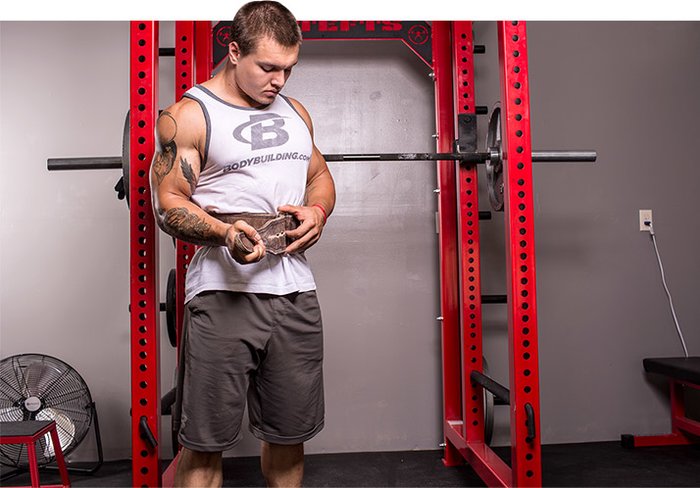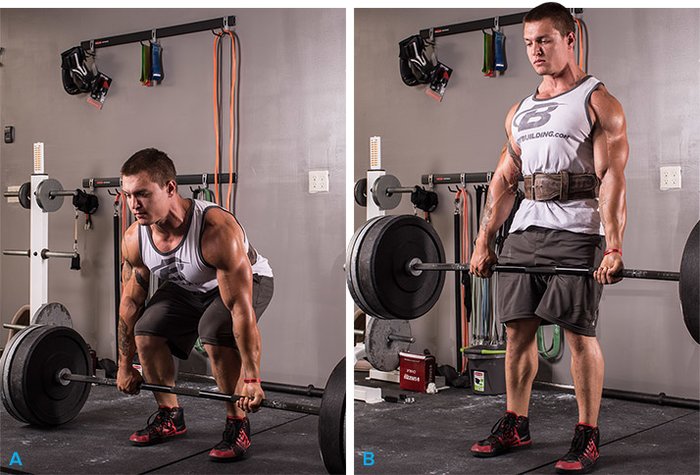How to choose a weightlifting belt
Should I be wearing a weightlifting belt?
If you squat and deadlift regularly (which you should!), then the answer to the question above is a big YES. A weightlifting belt is designed for just about anyone who aims to squat or deadlift as much as they possibly can.

(Image credits: bodybuilding.com)
A weightlifting belt is designed for just about anyone who aims to squat or deadlift as much as they possibly can.
Who shouldn't wear a belt is a longer answer. You shouldn't use a belt if you:
- Don't use a belt if you find it hinders your movement. If a belt affects how deep you can catch a clean or snatch, you'd probably be better served just to build your strength without a belt. In weightlifting, the low man usually wins.
- Don't use a belt if you have a heart condition or other health condition that could be made worse by the increased blood pressure and intra-abdominal pressure induced by wearing a belt in the first place.
Limit belt usage to HEAVY lifting only.
What Should I Look For When Buying A Belt?
A good belt made of sturdy leather will last decades, so don't be afraid to shell out $60-$100 for a good one, especially if you're a powerlifter, bodybuilder, or a general strength enthusiast.
For the most part, belts are not comfortable. Belts start off being very stiff and can take some time to be "broken in." Expect to get some bruising on the top of your hipbone or along your ribs from the belt digging into you during this process.

(Image credits: bodybuilding.com)
A good belt made of sturdy leather will last decades, so don't be afraid to shell out $60-$100 for a good one, especially if you're a powerlifter, bodybuilder, or a general strength enthusiast.
In general, the best belts for squats are 10-centimeters wide and 10-13-millimeters thick. Some people find that wider belts don't let them get into a good starting position for deadlift. If you're a competitive powerlifter, a leather belt tapered in the front (10 centimeters in the back and 5-7 centimeters in the front) helps with that issue. You may be better off getting two belts: one for squats and another for deadlifts.
If you're not quite that serious about it, you'd probably be better off just getting a tapered belt. It'll still do the job for squats—just not quite as well. Yet you won't be out of luck for pulls.
Another choice is a single-pronged buckle versus a double-pronged buckle. I generally recommend getting a single-pronged belt. Double-pronged belts look cool, but they can be annoying to put on and take off, and they're no more secure than a single-pronged belt.
Some belts latch and unlatch via a lever system, and they're faster to take on and off. However, many people like their belts a notch looser for deadlifts than for squats, and it takes a bit of time to reset the lever when you do each lift.
How Do I Use A Weightlifting Belt?
The first step is to set the belt. For many people, the belt sits just on top of their iliac crest (the top of the hip bone). When squatting, some people angle the belt up (above the belly button), some people have it going straight across, and some people angle it down (below the belly button). For deadlifts, it's usually either straight across or angled up—angling it down may interfere with getting into a good starting position.
Basically, this is more a matter of comfort than anything else. Start in whatever position is most comfortable. As you learn how to use it better, you may want to play around with different heights and angles to see what allows you to get your torso the tightest.

(Image credits: bodybuilding.com)
Basically, this is more a matter of comfort than anything else. Start in whatever position is most comfortable. As you learn how to use it better, you may want to play around with different heights and angles to see what allows you to get your torso the tightest.
After you set the belt, you'll need to adjust the tightness to find the right fit. You should use the tightest notch that still allows for a full intake of breath into your stomach, then try to press your stomach out against the belt. You know it's too tight if you can't get a full breath of air in or you have to elevate your shoulders to do so instead of solely expanding your torso.
On the other hand, if you can get a full breath on one notch but can still get a full breath on the next tightest notch, you're probably better off with the tighter one, at least for squats. Again, this is a matter of comfort, but many people prefer one notch looser for deadlifting because it allows them to assume a better starting position.
Recommended purchase
 I have tried quite a lot of belts in the past and particularly liked this one the best. Reasons for choosing:
I have tried quite a lot of belts in the past and particularly liked this one the best. Reasons for choosing:- Made out of genuine suede leather - should easily last you 10 years or more.
- Double pronged lock - secures well on the waist.
- Standard 4 inch width - used in competitions.
Get it here for a discount: 4 INCH-Genuine Suede Leather-Power- Weightlifting-Squat-Belt-Back Support-Professional Brace-Double Prong Closure-8 MM Thick-for Men-Non Slip-Long Lasting- Competition Standards
Get this belt from Amazon.
Cheers!

Comments
Post a Comment